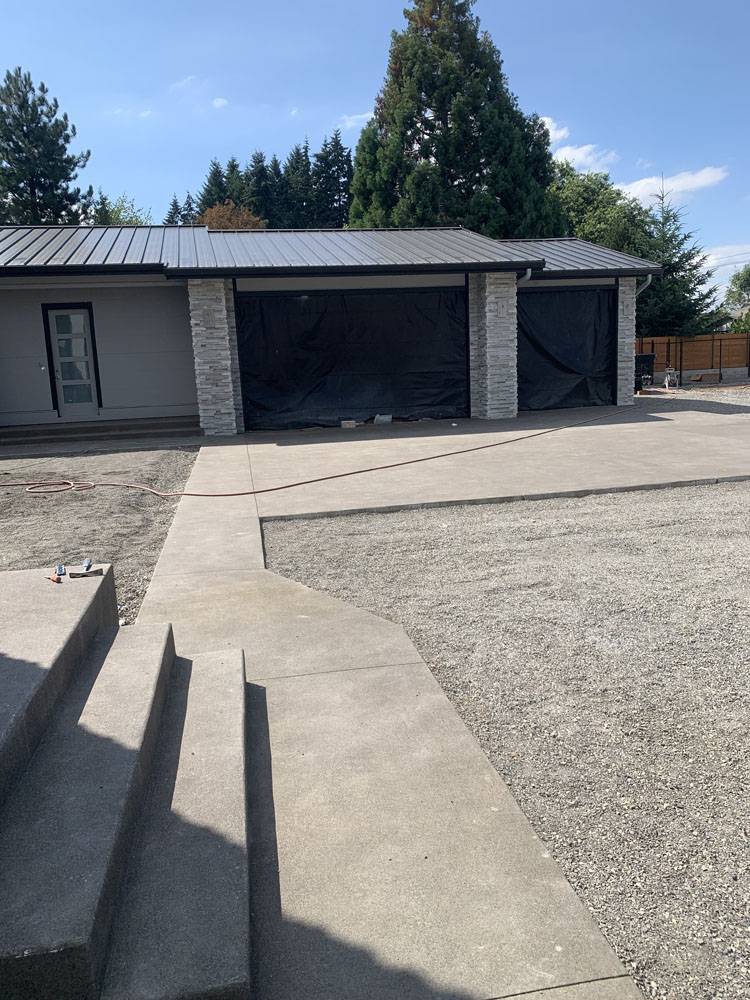Introduction
Concrete is often hailed as the backbone of modern construction. Whether you're pouring a driveway, constructing a patio, or laying the foundation for a building, the integrity of your concrete work is crucial to the overall success of your project. However, many individuals and contractors alike fall prey to common installation mistakes that can compromise both the appearance and durability of concrete structures. In this comprehensive guide, we’ll explore Don’t Let These 5 Concrete Installation Mistakes Ruin Your Project! and provide you with insightful tips to ensure your project stands tall against the test of time.
Understanding Concrete: The Foundation of Your Project
What is Concrete?
Concrete is a composite material made from cement, water, aggregates (sand and gravel), and various additives. This mixture hardens over time and becomes incredibly strong, making it an ideal choice for construction.

Why Choose Concrete for Construction?
Durability: Concrete withstands weather elements remarkably well. Versatility: It can be molded into various shapes and sizes. Cost-Effective: Long-term maintenance costs are lower compared to other materials. Sustainability: With advances in technology, concrete can be made greener.Common Uses of Concrete
- Foundations Driveways Sidewalks Floors Retaining walls
The Importance of Proper Installation Techniques
How Proper Installation Affects Durability
Did you know that improper installation can lead to cracks, spalling, or even structural failure? Understanding the significance of correct techniques cannot be overstated.
Benefits of Following Best Practices
Longevity: Properly installed concrete lasts much longer. Aesthetic Appeal: Smooth finishes and even colors enhance visual appeal. Safety: Reduces hazards associated with uneven surfaces.Don’t Let These 5 Concrete Installation Mistakes Ruin Your Project!
Mistake 1: Poor Site Preparation
Why Site Preparation Matters
The foundation upon which you pour your concrete matters immensely. Poor site preparation leads to uneven settling and drainage issues later on.
Steps for Effective Site Preparation
Clearing the Area: Remove all debris, vegetation, and loose soil. Compacting Soil: Ensure that the subgrade is compacted properly to prevent sinking. Setting Forms: Use sturdy forms that maintain their shape under pressure.Mistake 2: Incorrect Mixing Ratios
What Are Mixing Ratios?
Mixing ratios dictate how strong or weak your final product will be. Too much water can weaken concrete while too little can make it unworkable.
Recommended Mixing Ratio Guidelines
| Material | Ratio (Cement : Sand : Gravel) | |----------------|----------------------------------| | Standard Mix | 1 : 2 : 4 | | High Strength | 1 : 1.5 : 3 |
Mistake 3: Neglecting Weather Conditions
Why Weather Considerations are Important
Extreme weather conditions can have a drastic impact on curing time and overall strength development.
Tips for Working in Varying Weather Conditions
- Hot Weather:
- Work early in the morning or late afternoon. Use retarders to slow down curing.
- Ensure temperatures remain above freezing during curing. Use heaters or insulated blankets.
Mistake 4: Skipping Curing Process
What is Curing?
Curing refers to maintaining adequate moisture, temperature, and time to allow the concrete to achieve its desired strength.
Best Practices for Curing Concrete
Cover with Wet Burlap: Keep surfaces moist for at least seven days after pouring. Use Curing Compounds: Apply curing compounds that retain moisture effectively.Mistake 5: Ignoring Expansion Joints
What are Expansion Joints?
Expansion joints allow for movement within the concrete slab due to temperature Concrete Contractor In Mulino fluctuations or settling.
Importance of Including Expansion Joints
Neglecting expansion joints can lead to cracking as the material expands or contracts over time.
Frequently Asked Questions (FAQs)
FAQ 1: How long does it take for concrete to cure completely?
Concrete typically requires at least 28 days to fully cure, but significant strength is usually achieved within the first week if properly cared for.
FAQ 2: Can I pour concrete in rainy weather?
While it's possible, excessive rain may cause issues like washout or dilution; always consult a professional if you're uncertain about conditions.
FAQ 3: How do I choose the right type of concrete mix?
Consider factors like intended use (e.g., structural vs decorative), environmental conditions, and any specific load requirements before selection.
FAQ 4: Is rebar necessary for all concrete projects?
Not all projects require rebar; however, it’s essential for structural applications where tensile strength is critical.
FAQ 5: What should I do if my concrete has started cracking?
Assess the extent of damage; minor cracks may be repaired while larger ones could indicate underlying issues needing professional intervention.
FAQ 6: How often should I seal my concrete surfaces?
Typically every two years is recommended but check with local conditions and usage patterns for specific needs.
Conclusion
In conclusion, being aware of common mistakes in concrete installation can make all the difference between a successful project and one fraught with problems down the line. By avoiding issues such as poor site preparation, incorrect mixing ratios, neglecting weather considerations, skipping curing processes, and ignoring expansion joints—your investment will stand strong against wear and tear over time. Remember—Don’t Let These 5 Concrete Installation Mistakes Ruin Your Project! Pay attention to detail during each phase of installation; your future self will thank you!